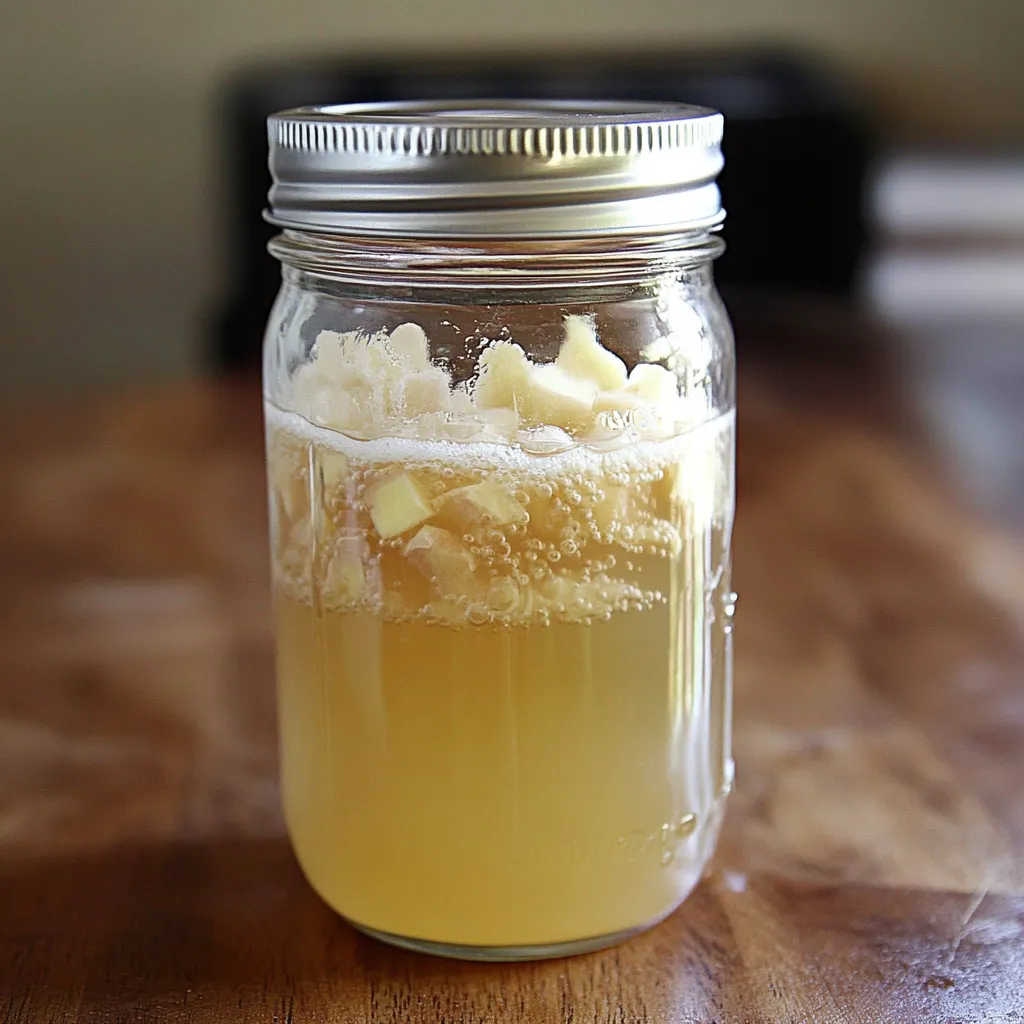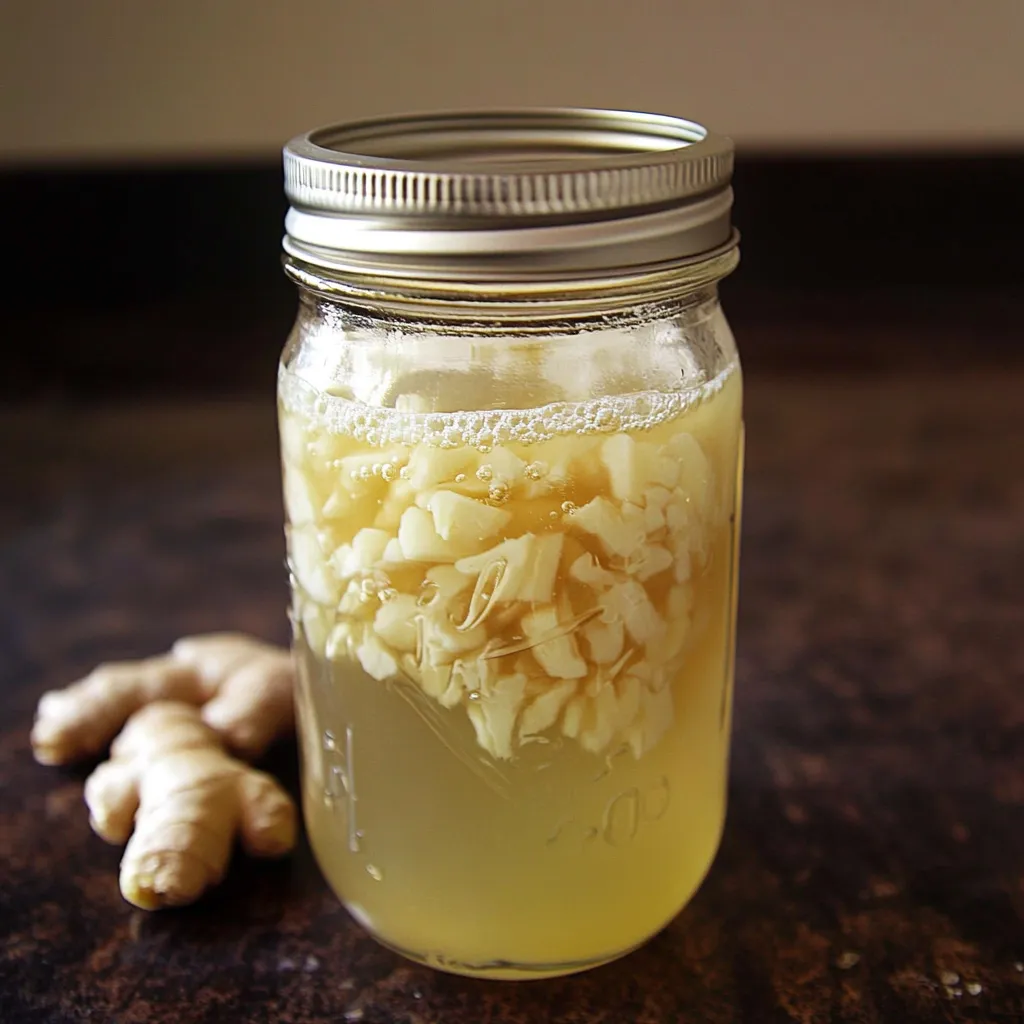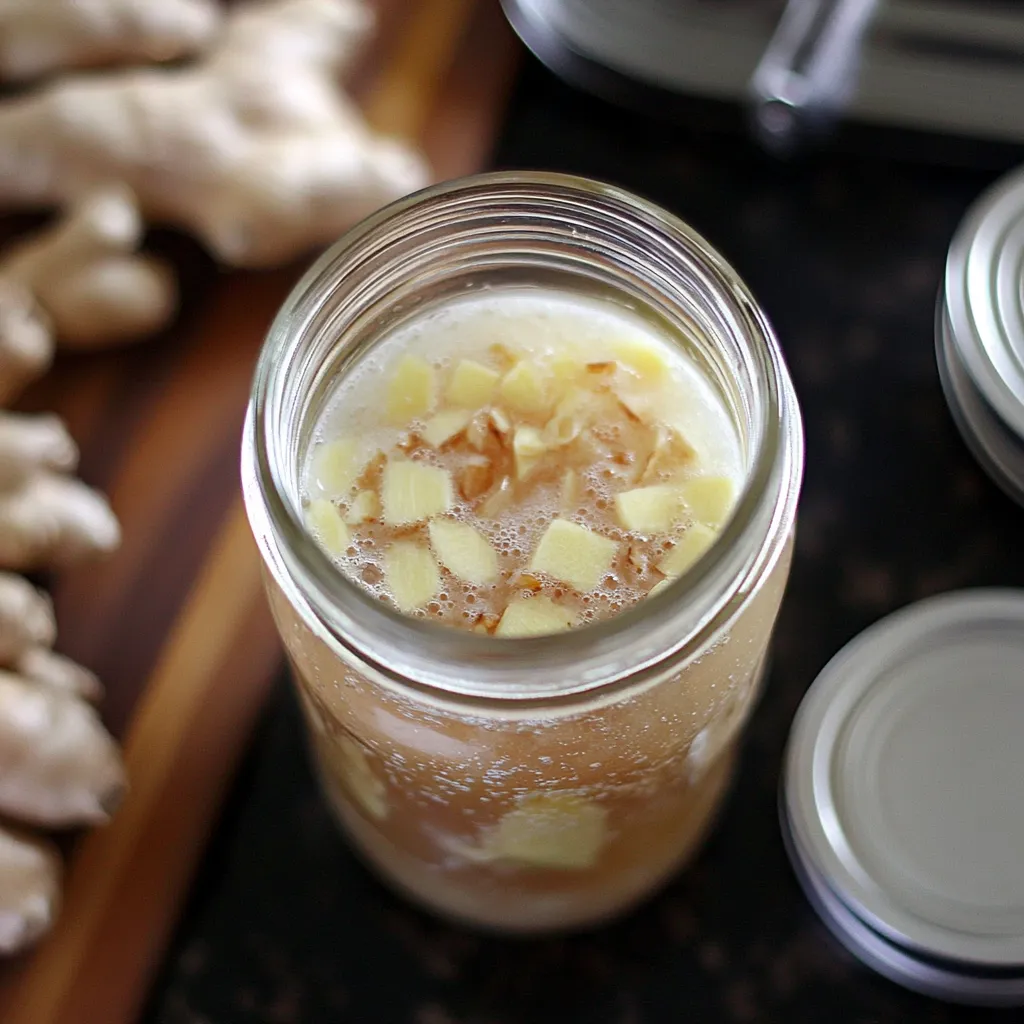 Pin it
Pin it
Crafting homemade fermented drinks starts with mastering the art of ginger bug, a natural fermentation starter that transforms simple ingredients into effervescent, probiotic-rich beverages. This traditional method captures wild yeasts and beneficial bacteria from fresh ginger root, creating a powerful starter that brings life to homemade sodas and fermented drinks.
Having crafted countless batches of ginger bug in my home kitchen, I've found this process deeply rewarding. The gentle bubbling sound and the fresh, spicy aroma that fills my kitchen never fails to bring joy to my daily cooking routine.
Essential Ingredients For Your Ginger Bug
- Fresh ginger root: Brings natural yeasts and gives your ferment its characteristic spiciness. Choose organic pieces that feel firm and have smooth, unblemished skin.
- Granulated sugar: Feeds the beneficial bacteria and helps activate fermentation. Plain white sugar works perfectly, offering the simplest food source for the microorganisms.
- Filtered water: Creates the perfect environment for fermentation. Spring water or dechlorinated tap water ensures nothing inhibits the natural process.
Creating Your Ginger Bug
- Starting The Fermentation:
- Thoroughly clean your quart-sized mason jar with hot soapy water, ensuring all soap residue is rinsed away. Fill with two cups of room temperature filtered water, creating the base of your ferment.
- Adding The First Ingredients:
- Mince fresh ginger into tiny pieces, maximizing surface area for fermentation. Combine with sugar in your prepared water, stirring until sugar completely dissolves.
- Beginning The Process:
- Cover your jar with a breathable cloth, securing it with a rubber band to keep out dust while allowing airflow. Place in a warm spot in your kitchen where temperature remains stable.
- Daily Feeding Ritual:
- Each morning, add freshly minced ginger and sugar to feed your growing culture. Stir thoroughly to incorporate oxygen and distribute nutrients evenly throughout the mixture.
- Monitoring The Progress:
- Watch for increasing cloudiness and tiny bubbles forming around the ginger pieces. Listen for a subtle fizzing sound when stirring, indicating active fermentation.
In my family, we've made ginger bug part of our morning routine. My children love checking for bubbles and listening to the gentle fizz, making it an educational experience about natural fermentation processes.
Perfect Pairings
Transform any fruit juice into a sparkling probiotic beverage. Mix with homemade lemonade for a refreshing summer drink, or blend with apple cider for a festive fall treat.
 Pin it
Pin it
Customize Your Creation
- Experiment with different types of sugar like raw sugar or coconut sugar.
- Try adding turmeric or cardamom to your ginger bug for unique flavor profiles and additional health benefits.
Preserving Your Culture
Store your mature ginger bug in the refrigerator between uses. Feed weekly to maintain vitality, and always bring to room temperature before using in recipes.
Chef Helpful Tips
After years of making ginger bug, I've found it to be one of the most rewarding fermentation projects in my kitchen. The satisfaction of creating naturally carbonated beverages from such simple ingredients continues to amaze me, and the endless possibilities for experimentation keep this tradition exciting and fresh.
Understanding Your Ferment
- Signs of Success:
- Learn to recognize when your ginger bug reaches peak activity. Small bubbles should rise consistently to the surface, and the liquid will develop a slightly effervescent taste. The ginger pieces may float, carried by the carbon dioxide produced during fermentation.
- Handling Dormant Periods:
- Even a neglected ginger bug can spring back to life with proper care. Return it to room temperature, discard half the liquid, and begin daily feedings again. Within three to five days, fermentation activity should resume, indicated by returning bubbles and that characteristic spicy aroma.
Common Challenges
Understanding potential issues helps maintain a healthy culture. Watch for any signs of mold, which appears as colored spots on the surface. If this occurs, it's best to start fresh rather than trying to salvage the culture. Prevention through cleanliness and proper feeding is key.
 Pin it
Pin it
Working with ginger bug has taught me patience and attention to detail. The subtle changes in aroma and appearance tell a story of microscopic activity, creating something truly special from simple ingredients. This traditional fermentation method connects us to centuries of food preservation wisdom while providing delicious, healthful beverages for our modern lives.
Frequently Asked Questions
- → How do I know my ginger bug is working?
- You'll see small bubbles forming and smell a sweet, fermented aroma. The liquid will become slightly cloudy and fizzy when stirred.
- → Can I use organic ginger root?
- Yes, organic ginger works great and often ferments faster since it has more natural yeasts on the skin. Just leave the peel on when mincing.
- → Why did my ginger bug stop bubbling?
- It might need fresh feeding, warmer temperatures, or looser lid. Make sure you're using unrefined sugar and keeping it in a warm spot.
- → How long will my ginger bug last?
- With regular weekly feedings, a ginger bug can last indefinitely. Store in the fridge between uses to slow fermentation.
- → What drinks can I make with it?
- Any sweet liquid can become fizzy - try fruit juices, herb teas, or ginger ale. Mix 1/4 cup starter per 4 cups liquid.
